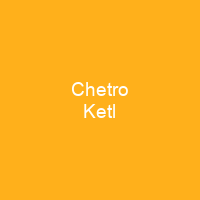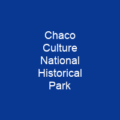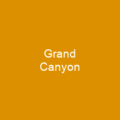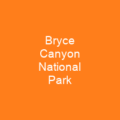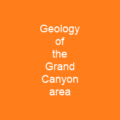Chetro Ketl: A Window into Ancestral Puebloan Civilization
Imagine a grand structure, built with meticulous care and precision, standing as a testament to the ingenuity of ancient peoples. Chetro Ketl, an Ancestral Puebloan great house in New Mexico, is such a marvel. Located within the Chaco Culture National Historical Park, this architectural wonder has captivated historians and archaeologists for decades.
The Construction and History
Construction of Chetro Ketl began around 990 CE and was largely complete by 1075. The site required over 500,000 man-hours to build, utilizing approximately 26,000 trees and 50 million sandstone blocks. This colossal effort speaks volumes about the advanced engineering skills of the Ancestral Puebloans. But why did they go through such an extensive process? Was Chetro Ketl a place of large-scale ceremony or perhaps a palace inhabited by royalty?
Archaeological Insights
Theories abound regarding its purpose, with scholars like Irwin-Williams dividing the Oshara Tradition into six phases. By 200 BCE, the Basketmaker culture had emerged from this tradition, leading to significant advancements in farming techniques and social structures. The La Plata phase (500-800) saw improved methods of agriculture, marking the beginning of the Pueblo I Period.
By 1130, Chaco Canyon faced a devastating drought that led to emigration from the area by 1250. This period marked the end of an era, as the Ancestral Puebloans began to migrate in search of more fertile lands. The site was rediscovered in 1823 and excavated between 1920-1935, revealing its intricate details.
Construction Details
The construction history of Chetro Ketl is divided into three phases: 945-1030 (minimal elements), 1030-90 (most extant features), and 1100-16 (renovation). The McElmo Phase, spanning the late 11th and early 12th centuries, introduced significant changes in masonry techniques. Chetro Ketl’s Kiva G complex and North Block F feature McElmo-style masonry.
Chacoan construction required tools such as digging sticks, hammerstones, and baskets. Water was scarce but collected from small reservoirs or deep wells during the rainy season. Doors and vents often featured sills made of flat stone slabs or thin wood beams with lintels constructed from rows of wood beams.
The Layout and Features
Chetro Ketl contains approximately 400 rooms, covering nearly 3 acres, with sections reaching four stories. It has a perimeter of 1,540 feet and is divided into three wings. The building features terraced construction and 12 kivas, including one known as the tower kiva. At 75 feet above the surrounding landscape, this feature stands out uniquely in the canyon.
The great house has corner doorways, unique among great houses in Chaco Canyon. Great kivas are larger and deeper than Chaco-style kivas, often with bench encircling the inner space and floor vaults. The earliest floor of Chetro Ketl’s kiva lies 15 feet below the current plaza surface.
Excavations and Discoveries
The first formal excavation of Chetro Ketl was conducted during 1920 and 1921 by Edgar L. Hewett, who discovered a more ancient great kiva buried 12 feet below the current one. He also found macaw feathers but no copper bells like those found at Pueblo Bonito. The site lacks exotic items and human burials.
In 1931 and 1932, Reiter and Gordon Vivian discovered caches of turquoise beads and pendants in the great kiva. In 1947, a stash of wooden artifacts was rescued from an unexcavated room during a flood. Archeologists consider these items unique and evidence of intense ceremonial activity at Chetro Ketl.
The Significance
Chetro Ketl’s position is symmetrical to Pueblo Bonito, with its buildings equidistant from a north-south axis that runs across the canyon. Scholars theorize that this area may be an ancestral sacred zone demarcated by a low masonry wall that encloses Chetro Ketl, Pueblo Bonito, and Pueblo del Arroyo.
Chetro Ketl is described as ‘notoriously sterile,’ with many artifacts remaining missing or lost. The site contains a colonnade, 93 feet long with thirteen columns, constructed sometime after 1105. Scholars have detected Mesoamerican influence in its design, proposing connections to Quetzalcoatl cults and Mexican architectural traditions.
Environmental Impact
The area between Chetro Ketl and Pueblo Bonito may have served as a central location for ceremonies, focusing on prayers for rain due to the importance of water in Chacoan survival. A long-distance communication system using smoke and mirrors existed in the region, allowing messages to be relayed between Pueblo Alto, Huérfano Mountain, and Chimney Rock Pueblo within minutes.
The road network suggests an intercommunity organization system and may have represented the apex of the hierarchical system. Great houses like Chetro Ketl were involved in civic coordination, and a state-level society developed at Chaco with administrative centers at Pueblo Bonito or Chetro Ketl.
Preservation Efforts
Following rediscovery, Chetro Ketl’s pace of dissolution increased alarmingly. Its wooden elements have deteriorated at an accelerated rate due to lack of timber and human activities such as scavenging, excavation, and treasure hunting. The structure has also been threatened by erosion, flooding, and construction efforts.
A reburial program was undertaken in the late 1980s to preserve the site’s original timbers. This effort aims to protect this invaluable piece of history from further degradation while ensuring its preservation for future generations.

Chetro Ketl stands as a silent witness to the rich history and culture of the Ancestral Puebloans. Its intricate design, strategic location, and historical significance make it an essential site for understanding the complexities of ancient civilizations. As we continue to explore and preserve such sites, we gain deeper insights into our shared human heritage.
You want to know more about Chetro Ketl?
This page is based on the article Chetro Ketl published in Wikipedia (retrieved on November 28, 2024) and was automatically summarized using artificial intelligence.
